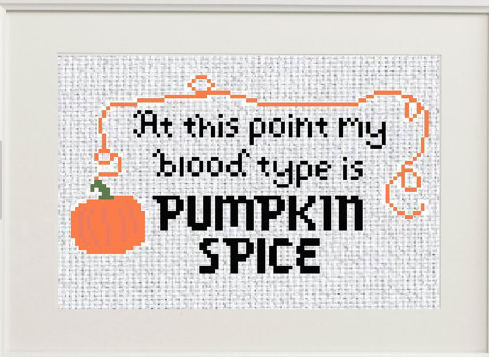Mild trigger warning for deeply negative, damaging descriptions of mental illness common during WWI.
I love epistolary novels, especially those with a solid thread of romance, so Last Christmas in Paris was a hefty dose of my catnip. While I was entirely absorbed by this novel when I was reading it, I found the ending and the finale of the emotional journey way too rushed, and not as finely wrought as the first 85% of the book.
The story opens with an elderly man looking out at snow falling over London in 1968. He’s alone, missing his wife, and he knows he is dying. A car arrives and a nurse escorts him to it, and he checks with her that she has packed his letters. All of them. He begins to reread them.
In August 1914, Evie Elliott, a wealthy young woman living in London, sees her brother Will and his best friend, Tom Harding, enlist in WWI. At first their letters are all excitement and confidence: all of them believe what the press has been saying, that the war will be over by Christmas, so this is a brief excursion, something novel and short-lived. And then the war continues and grows worse and worse. The death toll rises by the hundreds each day, bombs begin to strike London, and those who survive are injured in hideous ways from gas and massive weapons that the soldiers and their civilian families were not prepared for. Within a few years, their weaponry moves from bayonets to chemical gas bombs to tanks, and the physical and emotional cost is gruesome.
Through the war, Evie writes letters. She wants to do more to assist the war effort, and her determination and strength lead her in several directions. She writes to Tom and to Will, and as Tom has only one person to write to (his father, with whom he has a somewhat rocky relationship) he replies to Evie’s letters nearly immediately. The bulk of the story is told through Tom and Evie’s correspondence, but Evie also writes to her friend Alice, who joins the war effort as a nurse and ambulance driver in France. Evie’s role grows, first as she becomes a postal delivery person (much to her mother’s displeasure). She moves from writing letters to carrying them, including carrying the terrible letters informing a person of their loved one’s death, and the parcels containing their personal items.
Then, through her connection to Tom, whose family owns a newspaper, The London Daily Times, Evie begins writing a newspaper column under a pseudonym. The column is unique: it addresses the women left behind as the men go to France and beyond, and centers their emotional and personal experiences.
The writing is beautiful, especially Evie’s letters. Each of her letters to Tom does so much work: encouraging him, sharing images from home and bits of news, and every time trying to find meaning and purpose in the war, in what he’s doing as a soldier, in what she and other citizens are enduring as the war goes on over their heads and in their news. WWI brings her and Tom together as it keeps them apart:
We seem to dance around each other like autumn leaves, forever twisting and twirling about until a gust of wind sends us skittering in different directions.
Her columns for the newspaper are also part of the book, and they’re an emotional wallop, too, as she writes to the women of Britain, reassuring them and encouraging them that their efforts, their experiences and feelings matter. Evie and the women in her audience are unsure of how to contribute to the war effort, or how to go on now that the person or persons who left are not coming back. She writes about letters in one column:
We write words of love and support – incredibly brave, terribly proud, onwards to victory – pages and pages, never knowing if our words will be read, or any reply will be forthcoming. Those of us who are lucky enough to find a letter on the doormat devour the words inside with the appetite of a starving man. Those of us whose doormats remain empty must somehow find the courage to step over them and out into a world we no longer recognise. We smile at a neighbor, share news with the postwoman, thank the bus conductor in her smart uniform, but in quiet moments, when we’re alone, we ask the same question: What is this war without end? How much longer will it be?
The sections of letters form several parts which are framed by narration from Tom, who goes from London to Paris in December of 1968. Those brief scenes were not as emotionally vivid as their correspondence, which makes sense given that Tom is very old and ill while he narrates them. But I also found them to be jarring because I wasn’t sure who exactly he was talking to. Is he talking to me, the reader? To himself? To a diary? The writing is first person, present tense in each of the “joining interludes” between sections of correspondence, and while I wanted to be as involved in them as I was in the many letters and telegrams, I struggled to connect, in part because I felt like this narration was sort of floating unconnected to anything, while the letters are so firmly connected to a time, a date, a place, and a journey back and forth between London and France.
That said, the writing there was lovely and evocative, too:
An early morning fog lingers on the Seine, painted rose gold by the frail winter sun. Those were her favourite times: just after sunrise and just before sunset. The bookends of the day, she called them.
I particularly liked this line not only for the imagery, but also the way it reflects Tom himself, frail and in the winter of his lifetime, watching one of his last days begin from his apartment in Paris. His narration is the bookend and I suppose the bookmarks of the story, and I wish it had been stronger.
Let me talk quickly about what I didn’t like before I get back to the parts that I did. Most of this story, as I said, is very carefully developed, letter by letter and date by date, and the growth of Evie and Tom’s affections and their lack of confidence in disclosing their feelings follows that careful, deliberate pace. Tom seeks the comfort of Evie’s letters, but wants to protect her from the reality of how awful the war really is. In a clever parallel, the newspaper his family owns does the same: most of the newspapers are printing censored and largely positive news, creating confusion and anguish among those who receive letters from the war front, which report terrible losses, death, injury, illness, and futility. Evie and others around her aren’t sure what to believe or whom, and suffer greatly from that feeling of not knowing who to trust or who to believe, and worse, not knowing how to best help out.
Things get worse and continue to grow more bleak – I had to stop reading this book before bedtime and read something else before I feel asleep as the dreadful sadness of each letter increased. There’s a subtext early on of, Why, exactly, is this happening? and the way each character negotiates that question adds more dimension to the vividness of each character, revealed in their letters to and from Evie.
Evie is the lynchpin of this story: all the letters, columns, and telegrams come to and from her, or are carried by her as a postwoman. Evie grows so much in the course of the story. She finds her purpose, her drive, and her ambition in the face of a society that tells her to keep up social appearances, have tea and schedule dinner, knit and create parcels for the soldiers, but to stay out of the war otherwise.
So my biggest disappointment was the ending. I don’t want to spoil what happens with specifics, but there’s a huge rush and then, whoosh, it’s done. There is so much skipped over, so many threads left unfinished. As much as I loved the delicate and careful pace of the story, the ending made me feel frustrated and angry. What happened after the war? What happened with Evie and Tom, with the newspaper, with her life, with her writing, with her efforts to publish the truth of the war and her own experience, with Tom’s life and future. There are only hints. Everything after the war is absent, and while I understand that the story was about Evie and Tom during the war, skipping ahead from 1919 to 1968 meant that I, who was looking for the emotional satisfaction of the tension that was developed over the first 90% of the novel, was left unsatisfied. The denouement of the romance is terribly rushed, and I was left wanting more.
The pacing of the novel follows the emotional realization of the characters so carefully, and I was so fascinated by the tension created between their understanding of the war and how it contrasted with the actuality, and the way in which events they were in went on to be recorded in history. At one point, Tom falls into a deep despondency and is sent to a hospital for innovative treatment. His condition is called “Emotional Weakness.” That label gutted me as much as the descriptions of the attacks and the deaths in the story. We would now call it shell-shock, or PTSD, or an entirely normal response to seeing ghastly deaths happen in front of one’s eyes every day, the emotional toll that follows the terrible physical toll of technology allowing humans to kill one another en masse with terrible efficiency. Tom is embarrassed and ashamed, and his condition is treated by some as a weakness on his part. It reinforced my own feeling while reading this book of how much has changed, and yet how little: we’re still horribly skilled at killing swaths of people with ease, and we still too often describe mental illness and traumatic stress disorders as “weaknesses,” even 100 years later.
The letters that make up this story are achingly beautiful, elegant and absorbing, conveying both the beauty in the everyday moments, such as Evie sketching a bird for Tom and mailing it to him, and the gutted horror of what war does to individuals and families. The intimacy of Evie’s letters and telegrams recording her individual history and the larger history of the world around her made for deeply compelling and emotionally challenging reading. While I am still thinking about the book, my enjoyment was dampened by the rushed ending, and the absence of detail as to what happened to them after the war finally came to an end.





































 It’s Wednesday! Does anyone else need a nap? Because I know I do. So I think we should all just quickly read through some links and then have a bit of a lie down. What do you think?
It’s Wednesday! Does anyone else need a nap? Because I know I do. So I think we should all just quickly read through some links and then have a bit of a lie down. What do you think?



















































 The music in our podcast is provided by Sassy Outwater.
The music in our podcast is provided by Sassy Outwater.





